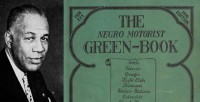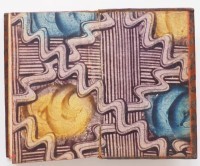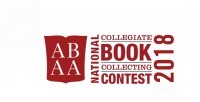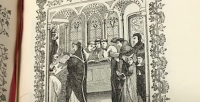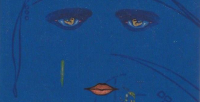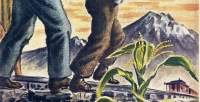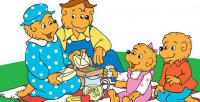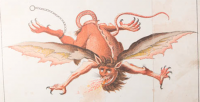In the Jim Crow era, travel was fraught with difficulty for African Americans. The growing black middle class could afford to buy cars and travel for leisure, and throughout the South, the purchase of a car was an important goal for black families as it allowed them to avoid segregated public transport. However, traveling by car to new towns and cities, African Americans did not know which restaurants would serve them, which gas stations would fill up their car, and where it was safe to spend the night. Enter Victor H. Green, a mail carrier in Harlem, who had the idea for a guide book for African Americans to help them navigate the country without injury or harassment — based, in part, on similar guide books from Jewish publishers. The Negro Motorists Green Book (later renamed The Negro Travelers Green Book, but known colloquially as the “Green Book”) was first published in 1936, and initially focused on the area Green knew best, New York; but he quickly expanded it, drawing on the knowledge of his fellow postal workers, who knew their neighborhoods intimately. The guide covered the obvious essentials of travel — where to stay, where to eat, where to buy gas — as well as the less obvious ones — where to find a doctor, a tailor, or black-owned businesses. As the guide book became established, both white and black business owners would seek out Green hoping to be included. At its peak, the guide sold over 15,000 copies a year, and was sold in Standard Oil (later Ess... [more What was a Green Book?]
On Collecting Books
In the spring of 2016, I set up a Facebook group called 'We Love Endpapers'. My idea behind it was to create a forum where like-minded people—booksellers, librarians, collectors, book designers—could share, or just drool over, pictures of particularly unusual or beautifully patterned endpapers as and when they came across them. I have always enjoyed the surprise of discovering a hidden gem of an endpaper when opening a book, and thought there may well be others out there who might like to join me in such a group. Sure enough, there are now over 2000 members, and I regularly get people coming up to me at book fairs thanking me for setting it up and saying how much they enjoy it! One thing I have realised since setting up the group is how confusing the terminology of decorated paper can be. With that in mind, here's a brief outline of the kinds of decorated papers you might come across when looking at books from the hand-press period. Many of the examples below have been taken from posts in the We Love Endpapers group (which, I should say, features books from all periods, including modern publications); I hope fellow group members don't mind if I share them here. Marbled Paper The technique of marbling paper was developed in Asia (the oldest examples, from Japan, have been dated to the 12th century) before travelling west, to Persia, Turkey, and Europe. The decoration is achieved not directly onto the sheet of paper itself, but on a liquid called the marbling 'size' ('a glu... [more Decorated Book Papers: a Beginner’s Guide]
The National Collegiate Book Collecting Contest is sponsored by the Antiquarian Booksellers' Association of America (ABAA), the Fellowship of American Bibliophilic Societies (FABS), the Grolier Club, and the Center for the Book and the Rare Books and Special Collections Division (the Library of Congress), with major support from the Jay I. Kislak Foundation. The 2018 winners are: First Prize: Samuel Vincent Lemley, University of Virginia: Biblioteca Genealogica: Sicilian Printing, 1704-1893 Second Prize: Paul T. Schwennesen, University of Kansas: Borderlands: A Manifesto on Overlap Third Prize: Hanaa J. Masalmeh, Harvard University: Far From the Eyes, Far From the Heart: My Life as a Syrian-American Muslim Essay. Ena Selimovic, Washington University in St. Louis: Ja, Ben, I, Je: A Book Collection in Translation We asked each some questions about their respective collections and their path to becoming a book collector. ---- First prize-winner Samuel Vincent Lemley of the University of Virginia collects items printed in Sicily between 1704 and 1893. Read his bibliography and essay here: Biblioteca Genealogica: Sicilian Printing, 1704-1893. Q: Could you give us a brief description of your collection? Samuel Vincent Lemley: My collection is an experiment in what might be called 'biblio-genealogy': it tells the story of my Sicilian ancestry in the form of books printed in Sicily during the years for which genealogical records of my ancestors survive. The chronological limits of my... [more Meet the 2018 NCBCC Winners]
Books "catch the eye" for many reasons: a colorful cover, a pithy title, or that rare moment of synchronicity that seems to conjure the perfect book at the perfect time. This week, a 1926 biography of Walt Whitman caught our eye for its magnificent title and a rare cut-out book celebrating Walt Disney's Snow White invoked childhood very strongly. Browse these and other items that leaped off the virtual shelves at us below... The Magnificent Idler: The Story of Walt Whitman by Cameron Rogers; illustrated by Edward A. Wilson Garden City: Doubleday, Page & Company, 1926. First edition of this earnestly humanizing popular biography of Walt Whitman, which "seeks neither to whitewash its subject nor exhume old scandals." The double-page landscapes by illustrator Edward Wilson, which depict Whitman communing with nature throughout his life, match the contemplative, gently comic prose of Cameron Rogers. Characteristic is the dialogue between the printers at work on the first edition of Leaves of Grass: "'Andy, this is crazy stuff.' 'Mebby.' 'Is this poetry, Andy, do you figure?' 'Mebby.' 'Anybody going to buy this stuff, Andy, do you figure?' 'Mebby.'" A near-fine copy, evidence of a mainstream readership grappling with Whitman's uncategorizable legacy in the decades after his death. Single volume, measuring 8 x 5.5 inches: , 312. Original full green cloth, yellow pictorial pastedowns to front board and spine, yellow pictorial endpapers, original unclipped color pictorial dust jacket... [more Books of the Week]
The ABAA Glossary of Book Terms defines a first editon, in part, as "all of the copies printed from the first setting of type," which can "include multiple printings if all are from the same setting of type." So, the term is rooted in the physical act of printing the pages of a book. But, the term also has a second meaning, specifically the first form given to a book, i.e. before any later changes (which could include corrections, additional copy, introductions, etc.) These changes, if minor, are referred to as the second (or later) "state" of the book, if major, they constitute new editions of the book. The phrase "modern" is more difficult to define, as it has been often used as a synonym for "contemporary," thus what was considered a modern first editon in the 1940s might not be regarded in the same way in the second decade of the 21st Century. Noted bibliophile John Carter observed that the term modern first edition "is, and probably always will be, quite unstandardised" in his classic guide to the terminology of the rare book trade, ABC for Book Collectors. For our purposes, we've culled a selection of first edition novels from the 20th century to showcase some of the first appearances of some of the canonical works from the past century. You can browse our members' full catalog of first editions here... The Great Gatsby by F. Scott Fitzgerald New York: Charles Scribner's Sons. Hardcover. First Edition, Matches all points on pages 60,119,165,205 and 211. Has a new wrappe... [more Modern First Editions]
Among the eye-catching items newly listed on abaa.org or featured in members' catalogs this week are some signed first editions, an inscribed photo of everyone's favorite princess from a galaxy far, far away, and a clever artist's book that captures the Beaufort Scale memorably. 0 1 2 3 4 5 6 7 8 9 10 11 12 Scale] by Stephanie Wolff & Sir Francis Beaufort Norwich, VT, 2015. Artist's book, one of 13 copies, all on Somerset Velvet Radiant White paper, each copy hand-numbered and signed by the artist on the colophon. Page size: 5 x 9-3/4 inches; 26pp; + colophon. Bound by the artist: compound structure, primarily non-adhesive, tabbed single pages sewn onto a concertina of French paper and then inserted into strip of Tyvek folded into Hedi Kyle's crown binding structure, reinforced covers of white Somerset paper sewn onto the concertina and sealed with adhesive at edges, housed in custom-made grey cloth over boards clamshell box lined with white paper, the front tray with THE BEAUFORT WIND SCALE printed letterpress in 14pt. Perpetua, each number with its corresponding word / words descriptor, i.e. 0 Calm, 1 Light Air through 12 Hurricane. The front cover of the book is printed letterpress, Perpetua 30pt., printed in light gray ink throughout. The text, in Perpetua 18pt., each line printed on a separate page, and that page with the word descriptor for the Beaufort Wind Scale number appearing in all caps perpendicular to the text in Perpetua 30pt, the BWS number which is printed bl... [more Books of the Week]
The World's Most Beloved (and Criticized) Family of Bears! If you are a '90s child like myself (or a '70s child, or an '80s child, or a 2000s child… or even a 2010s child), I can guarantee that you know a family of bears… that live in (pretty much) the coolest treehouse ever… and whose sister and brother magically (almost) always get along. I grew up envying this small family and their adventures in pumpkin patches and at school. (So get to the point, you say?) Well today we thought we'd do a short feature on our favorite (fictional) family of bears… the Berenstain Bears. The Berenstain Bear family and franchise was created by Janice and Stanley Berenstain in 1962, and has since become a series of over 300 titles. Since his mother's death in 2012 (Stan Berenstain died in 2005), the couple's youngest son, Mike Berenstain, has continued the family tradition by authoring the titles. A full family project, in a sense! Let's see how it all came about… In 1941, Janice Grant and Stanley Berenstain met on their first day at the Philadelphia Museum School of Industrial Art and became close very quickly. At the onset of World War II, they took up different war effort posts (as a medical illustrator and riveter), but were eventually reunited and married in 1946. They found work as art teachers, then eventually became co-illustrators, publishing works like the Berenstain's Baby Book in 1951 followed by many more (including, but not limited to Marital Blitz, How To Teach Your Ch... [more Children’s Books: The Berenstain Bears]
Every week, ABAA members issue new catalogs of rare books and ephemera. Most of the items featured therein are not-yet listed on abaa.org (but there are exceptions, as you'll see below). We scoured the most-recent batch of catalog to bring you a few highlights from within their pages... A HANDSOMELY ILLUSTRATED REAL GRIMOIRE FOR FANS OF HARRY POTTER FAUST, Johann; SCHEIBLE, Johann. Doktor Johannes Faust's Magia naturalis et innaturalis, oder, driefacher Höllenzwang, letztes Testament und Siegelkunst. Nach einer kostbar ausgestatteten Handschrift in der Herzogl. Bibliothek zu Koburg vollständig und wortgetreu; herausgegeben in fünf Abtheilungen, mit einter Menge illuminirter Abbildungen auf 146 Tafeln. Stuttgart: Verlag von J. Scheible (Druck von Fr. Henne), 1849. 8vo, 5 parts in 1 volume. 263, , pp. (last 7 pages bookseller's ads). With 146 numbered plates (with illustration no. 19 appearing later in volume on same plate as illustration no. 71) also with plates numbered 109 I, & 109 II (so the total does come to 146 as noted in title) lithograph plates (9 folding, 145 in 2 or more colors). Few minor marginal smudges at beginning of volume and some faint foxing. Very nice copy. Original cloth. FIRST EDITION of this rare and beautifully illustrated grimoire or Faustbook titled: "Dr. Johannes Faust's Magia naturalis et innaturalis or the Threefold Coercion of Hell, his last testament and the art of the occult sigil (symbol)" which the publisher states was copied from a manusc... [more Gems from the Latest Catalogs]
This morning, the ABAA leadership learned that Greg Priore, former Carnegie Library Archivist, and former ABAA member John Schulman of Caliban Books, have been charged with theft from the library. This is a truly regrettable situation for the larger book community, and one in which the Association shares the public's dismay that such a theft took place. At this point in time, to comment further would be premature, as we support the legal process currently being pursued and will await its outcome. During this period we will continue to closely monitor the developments concerning this serious matter. Sincerely, Vic Zoschak President, ABAA [more ABAA Statement regarding Carnegie Library Thefts]
The Antiquarian Booksellers' Association of America is pleased to announce the 2018 National Collegiate Book Collecting Contest! Established in 2005 by Fine Books & Collections Magazine to recognize outstanding book collecting efforts by college and university students, the contest aims to encourage young collectors to become accomplished bibliophiles. The magazine conducted the annual competition program for three years before turning over leadership to a collaboration of institutional partners (The Antiquarian Booksellers' Association of America (ABAA), the Fellowship of American Bibliophilic Societies (FABS), and the Center for the Book and the Rare Books and Special Collections Division of the Library of Congress, with the Kislak Prize underwritten by the Jay I. Kislak Foundation. Competitions are held at more than three dozen colleges and universities across the United States. Some contests have been conducted for decades, dating back to Swarthmore College's first competition in the 1920s. All college or university prizewinners are encouraged to enter. Student collectors whose institutions do not offer a book collecting contest also may enter. All entries for the 2018 competition must be submitted by June 15, 2018. Full rules and details can be found at https://www.abaa.org/ncbcc/the-national-collegiate-book-collecting-contest... Meet the 2017 NCBCC Winners! Enter the 2018 Competition.... [more 2018 National Collegiate Book Collecting Contest]


